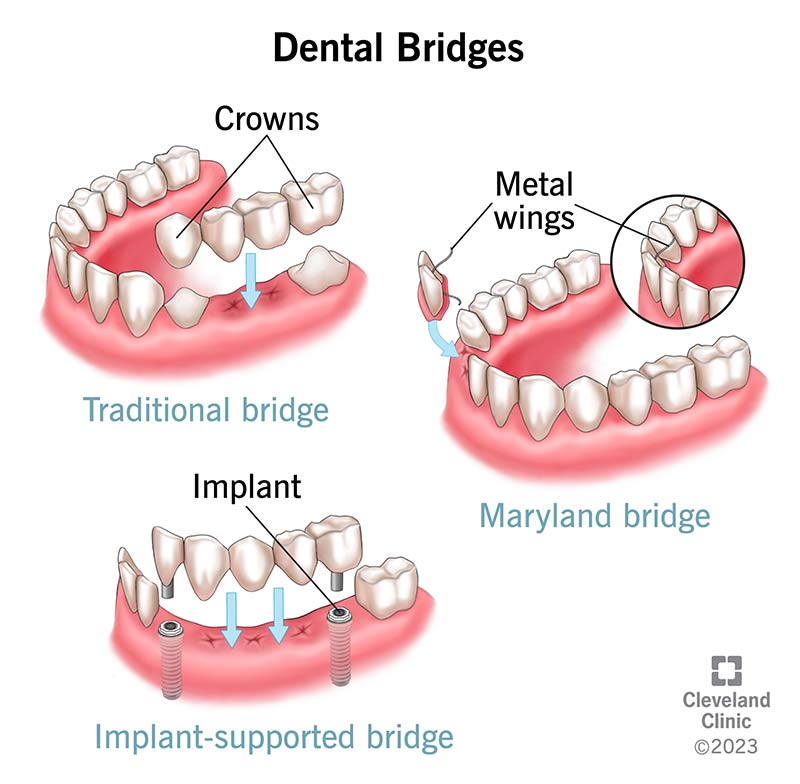Dental bridges are a restoration technique that replaces one or more missing teeth. Crowns are used on the teeth in front of and behind the missing tooth to support the false tooth. This entire restoration is cemented on to those supporting teeth.
There are several reasons to replace missing teeth, for instance:
- Migration: The teeth surrounding a vacant area in the mouth, including the teeth above or below, will move into that open area. The position that these teeth move into is unnatural for them and can cause them to develop problems, that can lead to tooth loss, in extreme cases.
- Function: Teeth in every part of the mouth are designed for particular functions. If there is an area that has missing teeth, that area cannot function properly. The result is for other teeth to assume the added work, of which they were not designed or intended. This added work can create problems that might cause additional teeth to need treatment or extraction.
- Appearance: This is the most obvious reason patients’ think of. The state of the art techniques and materials we use, results in a very natural look.
Dental Bridges are made to either be tooth colored or all gold. The tooth colored bridges usually have a sub-base of gold and porcelain is baked on to create a very natural look. There are variations to these two types and there are specific reasons why one material might be recommended.

What are the pros and cons of a dental bridge?
Dental bridges offer many benefits. But there are some drawbacks, too:
Advantages of dental bridges
Dental bridges can:
- Offer a natural-looking solution for tooth loss.
- Restore chewing and speech function (missing teeth can make it difficult to eat or speak properly).
- Prevent neighboring teeth from shifting into the gap left behind by missing teeth.
Disadvantages of dental bridges
Dental bridges also have some drawbacks:
- If decay or trauma results in damage to your abutment teeth, it can weaken your dental bridge.
- If your abutment teeth aren’t strong enough to support your bridge, they can fracture.
- If you don’t properly clean the bridge and underlying gum tissue, plaque and bacteria can cause gum inflammation or cavities.